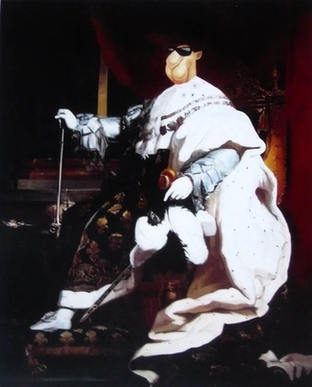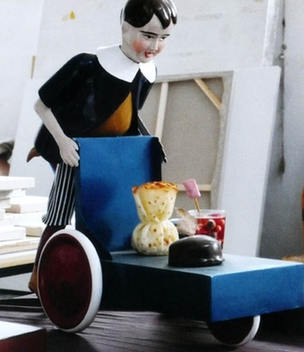Zhou Tiehai: It Is not Difficult to Make Art
For his first extended series entitled Placebo, begun in 1997, he appropriated the image of Joe Camel from American cigarette advertising, placing the head of the camel on the bodies of familiar aristocrats in Renaissance paintings or on David’s Odalisque. He produced them in acrylic with an airbrush, a technique borrowed from his commercial art days. Additionally, Tiehai’s paintings were not produced by his own hand. He hired assistants to carry out the process of making the art he conceived.
 |
|
Louis XVIII, 2009 |
Sitting in his relatively small studio in a co-op building in the center of the M-50 art district in Shanghai, Tiehai told me recently, “I didn’t see the need then, nor do I now, to make the paintings myself. It is the concept that is the creative part, and besides, most of the artists I know are not especially good painters, they are just famous.”
Critics agree that the device of Joe Camel functions on multiple levels but at its best, is an alter-ego for Tiehai that allows him to criticize what he believes is overplayed and over-promoted. In a later series entitled Ego, he appropriated the imagery of every contemporary artist from Jeff Koons to Cindy Sherman, all using his Joe Camel head. While this has become what he is best known for by collectors worldwide, putting him in a category he started out ridiculing, like the majority of contemporary Chinese artists I have met, he has begun to reference classical Chinese art as a means of connecting to his cultural history. His Tonic series is comprised of copies of masterworks by brush painters. Creating them with airbrush in acrylic, they retain the softness of brush and ink but the images are cropped and enlarged to the degree that they become abstract.
|
 |
|
One of Zhou Tiehai’s paintings. |
